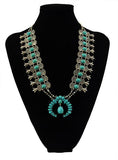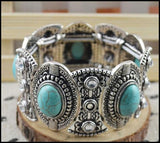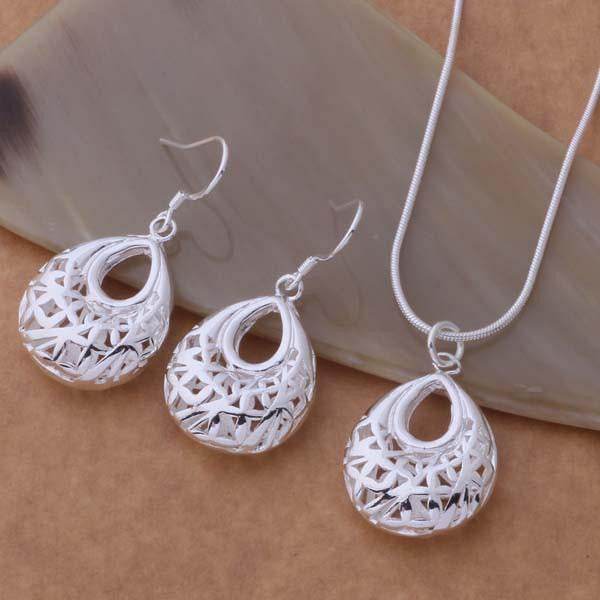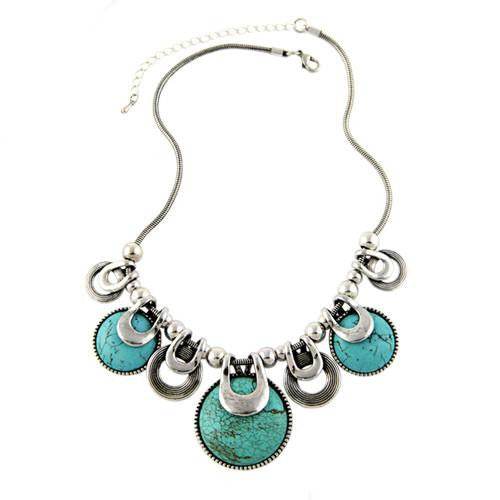News
How to Clean Your Silver Jewelry
 The majority of Western-style jewelry includes silver. This brightly shining metal has become synonymous with the west, stemming from the great silver boom of Colorado in the late 1800s. Since that time, many a cowgirl (and boy) have worn pieces of silver jewelry. But many is also the piece of silver which becomes tarnished over time, and in need of a good cleaning.
The majority of Western-style jewelry includes silver. This brightly shining metal has become synonymous with the west, stemming from the great silver boom of Colorado in the late 1800s. Since that time, many a cowgirl (and boy) have worn pieces of silver jewelry. But many is also the piece of silver which becomes tarnished over time, and in need of a good cleaning.
You may think it is difficult to keep your silver clean, but it isn’t. You do not have to take your items to a jeweler when there are do-it-yourself methods which can work just as well. As a soft metal, silver becomes stained with tarnish over time. Tarnish is a thin layer of corrosion which accumulates on some metals. This happens through long-term exposure to our everyday atmosphere and by coming into contact with other substances, such as oil and dirt from skin.
Some everyday household products work well for cleansing your silver. These methods  offer an inexpensive and less toxic or harsh approach to cleaning your jewelry. Plain toothpaste (without any special additives like a whitener), can be used to gently remove tarnish. The easiest way is to use a soft chamois or polishing cloth with a dab of toothpaste. Gently rub your silver jewelry and watch how the tarnish will transfer to the cloth.
offer an inexpensive and less toxic or harsh approach to cleaning your jewelry. Plain toothpaste (without any special additives like a whitener), can be used to gently remove tarnish. The easiest way is to use a soft chamois or polishing cloth with a dab of toothpaste. Gently rub your silver jewelry and watch how the tarnish will transfer to the cloth.
A Caution Tip: Watch for scratching, start on the underside or back of your jewelry. If the toothpaste has an abrasive, it could scratch.
A salt and aluminum foil bath will also clean your silver jewelry. Check out this Wiki-How tutorial for making this cleansing solution. It is best to use a bowl for this method, as opposed to a sink. Stainless steel in particular can damage silver. Salt is a gentle cleanser, ideal for soft metals. When you include some bits of aluminum foil in a salt-water bath, a chemical reaction occurs to tarnished silver, returning accumulated silver sulfide (the tarnish) back into simply silver. Baking soda can be used instead of salt as well.
A Caution Tip: If your silver jewelry includes gemstones, a salt bath may be too abrasive. For these more delicate pieces, I do recommend having them cleaned by a jeweler.
 There are also silver polishes and “dips” on the market. While these can work, be sure to follow directions carefully, as they can also be damaging. In particular, silver dips contain a variety of harsh chemicals, which will damage silver if exposed to it for too long. Whatever method you use to clean your silver jewelry, be sure to give it a good final rinse in warm water, dry thoroughly and store your silver away from other items.
There are also silver polishes and “dips” on the market. While these can work, be sure to follow directions carefully, as they can also be damaging. In particular, silver dips contain a variety of harsh chemicals, which will damage silver if exposed to it for too long. Whatever method you use to clean your silver jewelry, be sure to give it a good final rinse in warm water, dry thoroughly and store your silver away from other items.
A Caution Tip: Many substances are damaging to silver, including paint, stainless steel and rubber. Do NOT wear rubber gloves when cleaning your silver. Nitrile gloves, which are latex and rubber free, are a great substitute, and available at pharmacies everywhere, or online.
If you love Western-Style jewelry like I do, I invite you to check out our products, West Coast Cowgirl, where you will find a wide variety of jewelry options, including a lot of silver, from classic motifs, to more modern cowgirl bling. Whether you are looking for a gift for that special someone or ready to treat yourself to something new, products are added regularly so be sure to check back often.
The Allure of Turquoise in Western Jewelry
 If there is one iconic stone which speaks volumes towards what makes Western style jewelry a specific fashion, it is turquoise. From the way it pairs with silver remarkably well, to the historical connections with America’s old west, turquoise is a stone everyone can love and appreciate. There is also a lot more to this soothing, light blue stone that you may imagine.
If there is one iconic stone which speaks volumes towards what makes Western style jewelry a specific fashion, it is turquoise. From the way it pairs with silver remarkably well, to the historical connections with America’s old west, turquoise is a stone everyone can love and appreciate. There is also a lot more to this soothing, light blue stone that you may imagine.
When it comes to wearing jewelry, we choose what we are drawn to. Many are drawn the beauty of turquoise, especially those who enjoy the romance of the old west. This gemstone is found in drier climates, so the American west is one of the best known places to find it. Turquoise can also be found as far south as Mexico and Chile, and as far east as China, Tibet and Iran. Ornamental jewelry from all of these regions features turquoise with their own style, making for a wide range of beautiful and striking designs to choose from.
The colors of turquoise vary, from pale, sky-blue to a greenish-blue and many hues in  between. As a natural stone, turquoise is also affected by its surroundings. Different minerals can be seen in stones, and some will even affect the color. These differences give each region where turquoise is mined, a unique look and feel to the stones. A piece of stunning, light blue turquoise with a mosaic of black or brown minerals blooming across the surface, needs no ‘improvement” to the wow factor. Mineral variations add to this vibrant stone, and can include copper, iron and zinc.
between. As a natural stone, turquoise is also affected by its surroundings. Different minerals can be seen in stones, and some will even affect the color. These differences give each region where turquoise is mined, a unique look and feel to the stones. A piece of stunning, light blue turquoise with a mosaic of black or brown minerals blooming across the surface, needs no ‘improvement” to the wow factor. Mineral variations add to this vibrant stone, and can include copper, iron and zinc.
 Turquoise has long been held as a stone of protection by different cultures. Some Native Americans even used turquoise in their arrows so they would fly straight and sure. Turquoise is the birthstone for those born in December; a piece of turquoise jewelry makes and ideal birthday, or holiday gift. An important tip to know about turquoise: this soft stone can fade by too much exposure to sunlight, perfumes and cosmetics. Use a soft chamois cloth to gently cleanse your turquoise, and store in a soft pouch or jewelry box when not wearing.
Turquoise has long been held as a stone of protection by different cultures. Some Native Americans even used turquoise in their arrows so they would fly straight and sure. Turquoise is the birthstone for those born in December; a piece of turquoise jewelry makes and ideal birthday, or holiday gift. An important tip to know about turquoise: this soft stone can fade by too much exposure to sunlight, perfumes and cosmetics. Use a soft chamois cloth to gently cleanse your turquoise, and store in a soft pouch or jewelry box when not wearing.
If you love Western Style jewelry like I do, I invite you to check out our products, West Coast Cowgirl, where you will find a wide variety of jewelry options, from classic motifs to more modern cowgirl bling. Whether you are looking for a gift for that special someone or ready to treat yourself to something new, products are added regularly so be sure to check back often.





